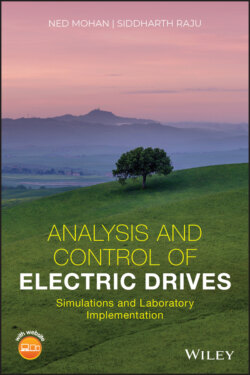Читать книгу Analysis and Control of Electric Drives - Ned Mohan - Страница 18
1‐3‐1 Energy‐Saving Potential in the Process Industry
ОглавлениеTraditionally, motors were operated uncontrolled, running at constant speeds, even in applications where efficient control over their speed could be very advantageous. For example, consider the process industry (e.g. oil refineries and chemical factories) where the flow rates of gases and fluids often need to be controlled. As Fig. 1-4a illustrates, in a pump driven at a constant speed, a throttling valve controls the flow rate. Mechanisms such as throttling valves are generally more complicated to implement in automated processes and waste large amounts of energy. In the process industry today, electronically controlled adjustable‐speed drives (ASDs), shown in Fig. 1-4b, control the pump speed to match the flow requirement. Systems with ASDs are much easier to automate and offer much higher energy efficiency and lower maintenance than the traditional systems with throttling valves.
Fig. 1-4 Traditional and ASD‐based flow control systems.
According to [1], the US industrial motor systems of all sizes and in all applications have the potential energy‐saving opportunity, as a percentage of the US end‐use electricity load, from 3.3 to 8.9%.
These improvements are not limited to the process industry. Electric drives for speed and position control are increasingly being used in a variety of manufacturing, heating, ventilating, and air conditioning (HVAC), and transportation systems, as we will see in the subsequent sections.
